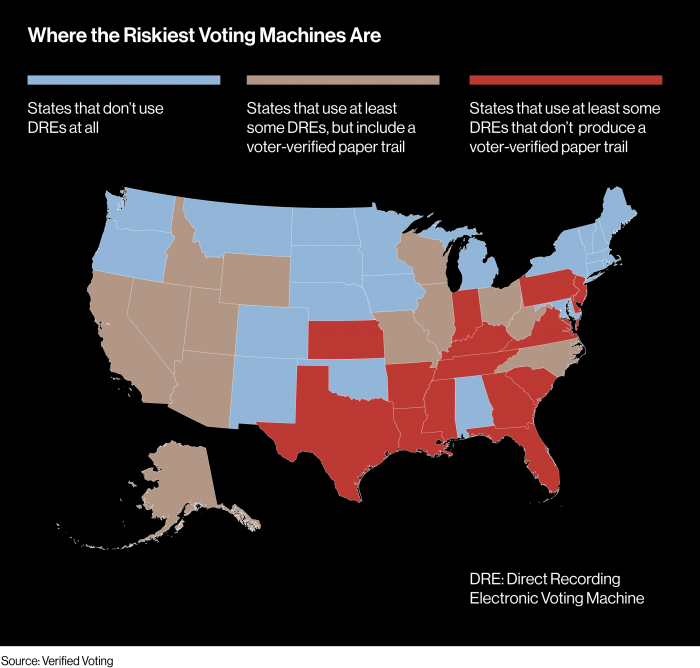A Close Election Could Expose Risky Electronic Voting Machines
Flawed election technology was at the center of the heated controversy over the outcome of the U.S. presidential election in 2000. If the 2016 election is as close as that one was, it’s possible that could happen again.
Instead of error-prone punch card systems, this time it could be outdated electronic voting machines that don’t produce paper backups that voters can verify.
Two years after the hanging chad debacle in 2000, President Bush signed the Help America Vote Act (HAVA), which among other things set aside more than $2 billion for states to replace outdated voting technologies including punch cards and lever machines. For-profit vendors raced to capitalize on the infusion, and many local election boards purchased computerized systems called direct recording electronic voting machines, or DREs.

Many experts say that using paper ballots is a better way to make sure election results are accurate. The best systems rely on optical scanners to tabulate the votes. Nonetheless, many of the DREs that states purchased over a decade ago are still in service. The majority are nearing the end of their expected lifespans or have exceeded them, according to recent academic research. Almost every state is using at least some systems that are no longer even manufactured. The older these machines get, the greater the risk of dangerous failures or crashes on election day.
And even though they aren’t connected to the Internet, and in many cases are very secure, they could still be hacked. If someone were to gain physical access to a machine, they could tamper with its software to influence or disrupt an election.
Software errors or hacks could be detected and even accounted for during a post-election audit—say, after an extremely close election—as long as the machine produces a paper record that a voter can use to make sure that her vote was recorded correctly. Unfortunately, many of the machines in use don’t produce such paper records. This November, voters in 11 different states will cast their votes using paperless electronic voting machines, including the important battleground states of Pennsylvania, Virginia, and Florida.
That’s an improvement over the last presidential election, when 17 states were using paperless DREs. But a recent analysis by Reuters found that one in four voters reside in areas that use electronic machines that don’t produce paper backups.
Keep Reading
Most Popular
Large language models can do jaw-dropping things. But nobody knows exactly why.
And that's a problem. Figuring it out is one of the biggest scientific puzzles of our time and a crucial step towards controlling more powerful future models.
The problem with plug-in hybrids? Their drivers.
Plug-in hybrids are often sold as a transition to EVs, but new data from Europe shows we’re still underestimating the emissions they produce.
Google DeepMind’s new generative model makes Super Mario–like games from scratch
Genie learns how to control games by watching hours and hours of video. It could help train next-gen robots too.
How scientists traced a mysterious covid case back to six toilets
When wastewater surveillance turns into a hunt for a single infected individual, the ethics get tricky.
Stay connected
Get the latest updates from
MIT Technology Review
Discover special offers, top stories, upcoming events, and more.